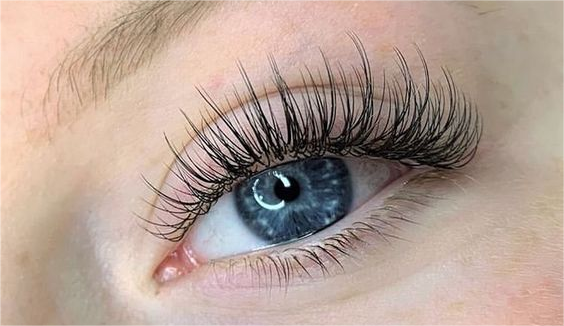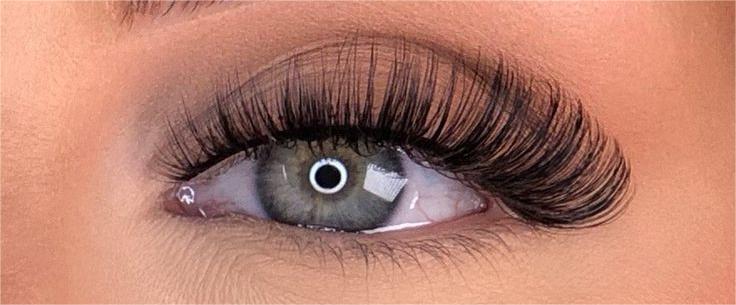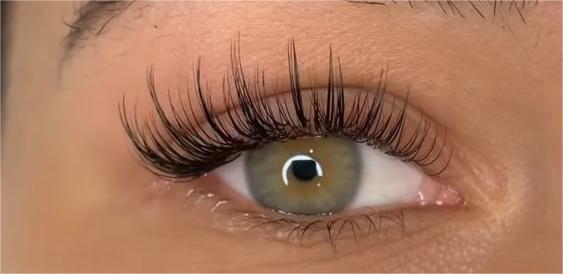This may seem like something that can wait until you have overflowing bookings and a client list the length of your arm, but trust us when we say that having policies in place from the start will not only protect you and your business, but will also build respect between you and your clients. It can be tough to know which policies to have in place when you're just starting out as a lash technician, but that's where we come in! These are the most frequent lash technician policies that will provide you piece of mind while also establishing good business boundaries for your clientele.

POLICY FOR PATCH TESTING
Okay, so this isn't always something you should enforce, and it's been a hotly discussed topic in the lash industry for years. Patch testing for eyelash extensions isn't exactly foolproof - you're only applying 10 lashes per eye, rather than the 80-150 you'd apply during a full set, so it's quite common for a lash extensions patch test to yield a negative result, only for your client to react later. Couple that with the fact that long-term lash users are more likely to have a reaction owing to the body building up a tolerance to the adhesive over time, and I think you can see why patch testing procedures are contested.
However, two things should be noted here: first, certain insurance providers will demand you to perform patch tests in order for your coverage to be legitimate. In this instance, you must have a mandated patch test policy in place or risk being sued and receiving no assistance from insurance. The second point to make is that even if your insurance provider does not enforce it (in this situation, they will likely send you to the firm from which you purchased the glue to see what their policy is), it is worthwhile to offer one to your clients.
Giving your clients the choice of a patch test after thoroughly discussing the dangers of allergic responses, no matter how slight they may be, goes a long way toward building confidence.
INFILL POLICY
You'll thank us for this policy even if it initially seems like it doesn't need one. You'd be shocked at how frequently a customer will book an infill and arrive with two or three lashes hanging on for dear life if you haven't been a lash technician for very long or haven't yet picked up a set of lash extensions tweezers.
In general, up to 40% of the lashes will be replaced during an infill for eyelash extensions. If you need a full set, you should charge extra if you need more than that (unless there is a retention problem, in which case it is worthwhile investigating what might have gone wrong and working with your client to fix it). Encourage your clients to schedule an appointment for an infill at the conclusion of their complete set and at each subsequent infill as a strategy to reduce this. To maintain lashes looking full and new, it's often advised to schedule infill sessions every two to three weeks, depending on their rate of growth.
It's wise to put in place a little guideline stating that appointments that are more than 3 weeks or 40% covered are considered to be a full set and may need to be rescheduled to accommodate the proper appointment time.
LATE POLICY
A lateness policy will simplify your life and enhance the experiences of any clients who arrive after any latecomers.
Prior to anything else, define what "late" means to you. Generally speaking, arriving 15 minutes late to a full set would be considered unacceptable because you can still complete your pretreatment process, get adequate coverage, and check for stickies at that time without significantly reducing how full the lashes appear to be.
There are two ways to deal with being late. The first is to have a general policy that says, "Any more than 15 minutes and we have to reschedule your appointment." This prevents you from having to rush anything and establishes a clear expectation that your time is valuable.
The second strategy you may use is to begin later but end at the appointment's scheduled time, giving them the best possible coverage. This strategy can work in some situations, such as when the individual requested a light set and you could fill in gaps with 2D fans using your lashes, but it can come off as petty—certainly more petty than the first choice. Consider which strategy will work best for you.
NO SHOW POLICY
This is the major reason we strongly advise having a deposit system in place; by requiring a 50% deposit for any service, you can still collect payment even if every customer that day cancels without notice, which actually lowers the number of cancellations.
If a client cancels, your company's policy may be to hold the deposit; if they wish to reschedule, they must pay a fresh deposit. Depending on the customer and their position, you might occasionally decide to disregard this need, but in the long term, you'll benefit greatly from having something in place.
CANCELLATION POLICY
It's all about protecting oneself with that deposit, which goes hand in hand with the previous point. How likely are you to be able to fill that spot when there are cancellations is what you should actually consider. Consider setting a cut off at 24 hours as a general guideline. If they notify you two days in advance that they won't be able to make it, it's extremely kind, and you can either move their appointment to a new day or, if they prefer, refund their deposit. You still have time to fill their spot with advertising. Just like with a no-show, you are well within your rights to keep the deposit if there are fewer than 24 hours until their appointment.
Make sure that any procedures you implement safeguard both the clients who appreciate your time as well as your business and your money. Make sure that your clients understand all of your policies so that there are no future disputes regarding them. This is a crucial last point to remember.





